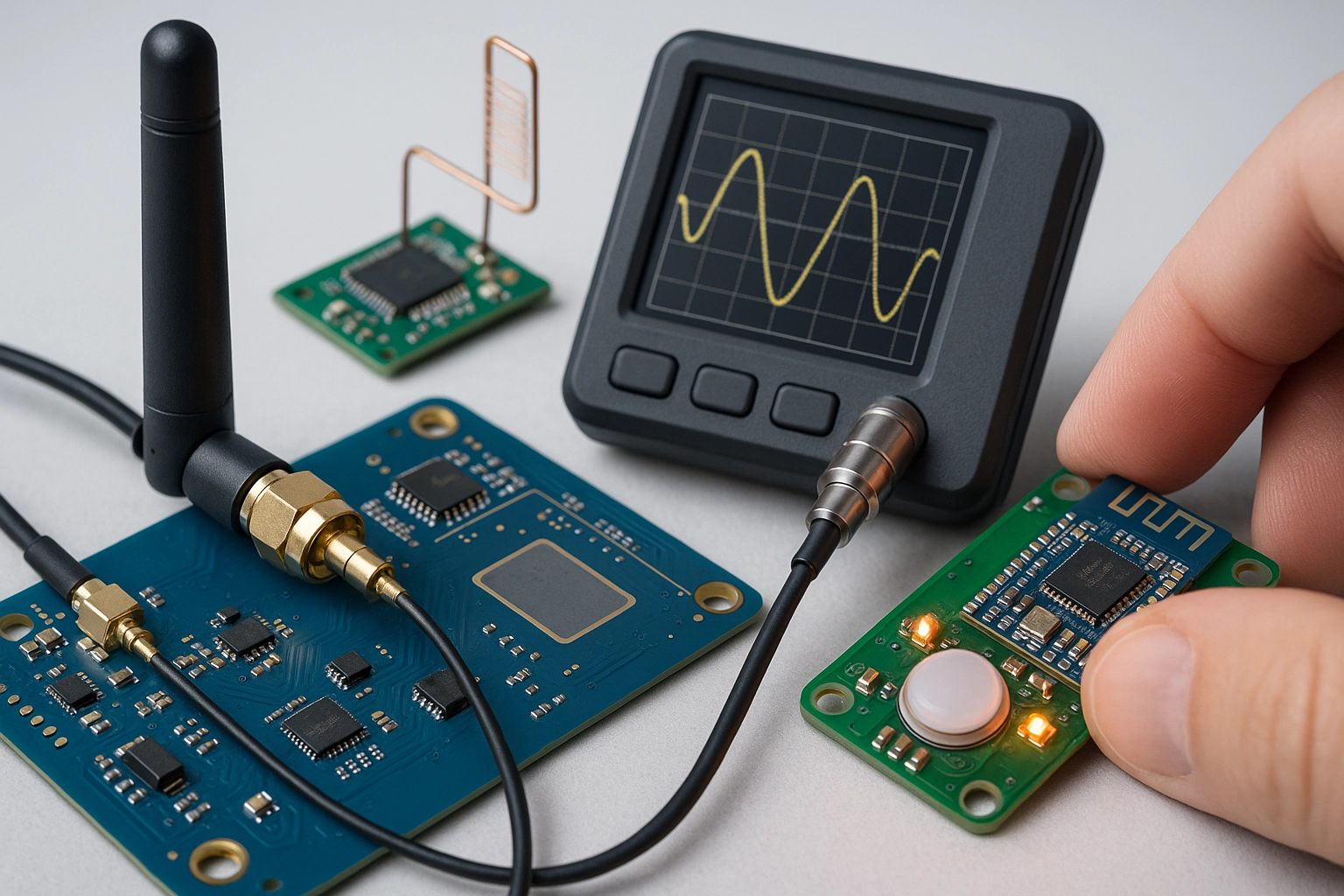MIL STD 464 Electromagnetic Environmental Effects Wireless Test
The MIL-STD-464 series of specifications sets forth the requirements and procedures for testing electronic equipment to ensure its robustness against electromagnetic environmental effects. This includes evaluating wireless devices under conditions that mimic real-world electromagnetic interference (EMI) environments, such as those encountered in military and aerospace applications.
This test is crucial for manufacturers of automotive components, particularly those with wireless connectivity features like sensors, control units, and communication modules. The test evaluates the equipment's ability to function correctly in harsh electromagnetic conditions, ensuring reliability and safety under various environmental stresses.
The MIL-STD-464 series covers a wide range of tests including, but not limited to, frequency band testing, pulse modulation, and high-power EMI exposure. These tests are designed to simulate the electromagnetic environments that can be encountered during operation in military and aerospace contexts. The standard is highly relevant for automotive manufacturers as it ensures wireless connectivity components meet rigorous standards before deployment.
For quality managers and compliance officers, understanding the specifics of MIL-STD-464 testing is essential to ensure that all products comply with regulatory requirements. R&D engineers must be aware of these tests to design products that can withstand harsh electromagnetic environments. For procurement teams, this knowledge aids in selecting suppliers who adhere to such stringent standards.
The MIL-STD-464 series includes both general and specific test methods for various types of equipment. It also provides guidance on the measurement techniques used during testing, which are critical for accurate evaluation of the equipment's performance under electromagnetic stress. The tests include exposure to various frequencies and power levels, ensuring that the wireless devices can operate reliably in a wide range of environmental conditions.
The standard is designed to ensure that electronic equipment functions correctly even when subjected to severe electromagnetic interference. This includes testing the device’s ability to maintain signal integrity, avoid degradation in performance, and resist failure due to EMI exposure. The tests are conducted in controlled laboratory environments where the exact parameters can be fine-tuned to replicate real-world conditions.
By ensuring compliance with MIL-STD-464, manufacturers can gain a competitive edge by demonstrating their commitment to quality and reliability. This is particularly important for companies operating in the automotive sector, as the standards help ensure that wireless connectivity features in vehicles are robust enough to withstand the electromagnetic environments they will encounter on the road.
The MIL-STD-464 series of specifications sets forth the requirements and procedures for testing electronic equipment to ensure its robustness against electromagnetic environmental effects. This includes evaluating wireless devices under conditions that mimic real-world electromagnetic interference (EMI) environments, such as those encountered in military and aerospace applications.
This test is crucial for manufacturers of automotive components, particularly those with wireless connectivity features like sensors, control units, and communication modules. The test evaluates the equipment's ability to function correctly in harsh electromagnetic conditions, ensuring reliability and safety under various environmental stresses.
Benefits
- Enhanced Reliability: Ensures that wireless devices can operate reliably in a wide range of electromagnetic environments.
- Compliance with Standards: Helps manufacturers meet regulatory requirements and industry standards, which is essential for global markets.
- Increased Product Lifespan: By ensuring the robustness of wireless components, MIL-STD-464 testing can extend the lifespan of products in harsh environments.
- Better Performance: Tests ensure that equipment maintains its performance under high electromagnetic interference conditions, leading to better overall product quality.
The MIL-STD-464 series is particularly beneficial for companies operating in the automotive sector. By ensuring that wireless connectivity features are robust enough to withstand real-world conditions, manufacturers can provide safer and more reliable vehicles. This not only enhances consumer confidence but also supports the company's reputation as a leader in quality and safety.
International Acceptance and Recognition
- Global Standard: MIL-STD-464 is recognized globally for its rigorous testing requirements, ensuring consistent standards across different markets.
- Regulatory Compliance: The standard is accepted by regulatory bodies in various countries, facilitating easier compliance with local regulations.
- Market Access: Meeting MIL-STD-464 specifications can open up new market opportunities and enhance the product's appeal to international buyers.
The acceptance of MIL-STD-464 across different regions highlights its importance in ensuring that wireless devices meet high standards for electromagnetic robustness. This recognition is crucial for manufacturers aiming to penetrate global markets, as it provides a clear pathway for compliance and market access.
Competitive Advantage and Market Impact
Complying with MIL-STD-464 can provide significant competitive advantages in the automotive sector. By demonstrating that your products meet these stringent standards, you position yourself as a leader in quality and reliability. This is particularly important in an industry where consumer trust and safety are paramount.
Meeting these specifications can also lead to increased market share by attracting buyers who prioritize product performance and durability. It enhances the overall reputation of the company, making it more attractive to potential customers and partners. Additionally, compliance with MIL-STD-464 can help in securing contracts with government agencies and defense contractors, further boosting a company's position in the industry.
For procurement teams, ensuring that suppliers meet these standards is crucial for maintaining high-quality products. By selecting suppliers who adhere to such stringent testing protocols, companies can ensure consistent quality across their supply chain.





